Collaborating to Plan a CCSS Lesson for ELLs Transcript
Teachers: Mari Rodriguez and Tita Galde
Mari: Because we both have different strengths and it's really nice to rely on that strength.
Mari: I'd like to introduce to you just an amazing woman. Last year, she traveled to Europe - not just because she wanted to visit the sites - because she was also competing in a frisbee tournament and guess what? She brought back the gold!
Tita: Thank you. To my right, here - Maricela Rodriguez, who I admire so much because Mari broke a lot of barriers, she was a pioneer. Not only did she go to Berkeley for Undergraduate - leaving home. Something that girls didn't do and then, went on to Masters at Harvard. Bringing everything back to the classroom, so it's an honor to teacher with you.
+++ 00:01:01.25 +++
Mari: Awww, thank you Tita.
Mari: What I find that's really easy for my students because they've had a lot of practice. The circle map, asking questions - that's very easy. My biggest concern was the meat of the lesson - that was when we were gonna be working with the informational text that we were really sure that was gonna go...
Mari: We work at the same school and we work next door to one another. We're constant, it's continuous. Everyday. We check in with one another, honestly.
Tita: I'm really happy about this part. The reason is because - yes, with the common core standards in mind and what we have to teach. Well, the science standards are so rich in vocabulary and - you can use all of your senses - which is perfect for the second language learners. And my strength is science, Mari's strength is language arts, so there we go - how are we going to do this?
+++ 00:02:02.16 +++
Mari: I thought it would just be a great idea to marry both of the standards - let's use the standard 2.1 of asking and answering questions to understand key details so, we've been teaching different topics like fossils because - in second grade, you know the students need to understand about soil and rocks so when we got to the topic of soil, "hey, let's do soil!" And so, collaboration means different things. Sometimes it means just agreeing to the same topic that we're gonna be teaching and then somebody has an idea and that idea leads to another idea and we're always asking, "ok, if we're gonna teach this, what do we have?" What do we have at school, so that means we're not spending our money even though sometimes we do. +++ Laughs +++ We know that we have actually, this amazing resource in Foss. I have tended to just use Foss. The books, the resources during science. But now, with the shift, I use it in informational text. I think it just came up. Sometimes we don't even know, does she have the idea or do I have the idea? Hey! Here's the source that's here, that offers just great photos. Visually appealing to the kids. It enriches the academic language that Tita is talking about.
+++ 00:03:26.08 +++
Tita: When I read the text, it was daunting even for myself to read about the different types of soil. Those scientific words that I've never read before and discussing with Mari, "Mari, really?" I remember asking you about this and, "don't worry about that part of it." You remember what you told me?
Mari: yeah, I said, "The reason that I was thinking of doing this particular lesson is because this was a way to integrate the science standard where we're teaching the kids what they need to know in second grade all about rocks and how rocks form and I also wanted to integrate the reading informational standard 2.1 of asking and answering questions because the focus of this lesson is really about E.L.A. -- English Language Arts. It's not a science lesson, it's about just the process of teaching kids how to ask and answer questions, so I did not get bogged down -- and I didn't allow them to get bogged down and I didn't allow them to get overwhelmed by the scientific terms because that was not the objective.
+++ 00:04:38.04 +++
Tita: Exactly. When Mari and I plan together, we take into consideration the Common Core standards in English Language Arts.
Mari: I actually was very happy when my students shared at the very end. They were just so eager to write so much. That showed me that - yes, they're going back to the text because that is the shift with the Common Core now. When students read, when students write, they need to go back in to the text and provide that evidence and that's how we show them, "hey, this is valuable."
Tita: And the shift for me - for the Common Core standards, was that really focusing on, "what was that standard." I kept wanting to say, "well, let's read it. Let's get deep into it." It's like, "wait a minute. There's a place for that." But this wasn't the lesson for that place. And that's what you helped me to really focus on. I appreciate that. And I like to continue doing this with, maybe the next step. Or another area. We could do this in math, also.
Mari; Oh my gosh, yeah! Absolutely.
Tita: And, so then we could continue planning this way.
+++ 00:05:51.12 +++
Tita: We're discussing how important collaboration How important to use the standards. How important to us our resources. But in the end, we have the evidence, looking at our student work that they got it. And that's really what we want to make sure we put everything together and now, talking about evidence? We have the evidence that our students got it.
Mari: So, Tita, let me share what Carmen wrote in her journal: "Today, I learned about soil. And that what lives in the soil is spiders, worms and bacteria. I also learned that the people who studies soil is called pedologist. And another way is that" - this doesn't make sense, but still, this is what she wrote - "another way is that, what part of the made of is minerals: rock, water, clay, sand, silt and organic material." What I also love is that they're using the transitions words. For example, they have a beginning sentence, and then also and then another and then she writes, "finally, I learned that what soil - that what covers the earth is soil." I get what she gets.
Tita: She got a lot. Evidence.
+++ 00:07:03.06 +++
Mari: And what I like about this ten minutes writing or fifteen minutes when they're synthesizing is it really gives freedom to the kids in terms of where they're at. Carmen can just write as much as she wanted to.
Tita: Mari's classroom has a ELD levels three and four while I have an English only classroom. Mari's students have, what we call ELD portfolios. So, Mari needs to make sure that her students meet the standards in the English language development. That's what ELD stands for. I don't need to do that with my students. My students have already mastered English at their level. We still are working on mastering them at the second grade level.
Mari: All my students are ELD level three but Carmen, I think is close to reclassifying. When you have a class where all the kids are ELD three, there's always such a variety. Also, Carmen has very good reading abilities. As opposed to some other students who are struggling but what I like about it, they're still getting the content.
+++ 00:08:20.28 +++
Mari: I think in the past I've shied away from giving them the sheet because it seemed really hard - challenging. And it is. We know that reading is a most difficult thing for our brain to do and that's why it's important to just do it in baby steps. But then I see kids coming up with these fantastic questions and it makes me feel good that the time that I spent asking them what questions do you have? The time that I spent, "ok, let's look at our questions and what kind of questions are these?" Then, that's a good investment of my time."
Tita: I like the fact that the templates - you can go back, you can go back, you can back and look for the evidence and really fill that in. And it has nothing to do with fluency.
Mari; But it is the by-product, right?
Tita: That's right. So, there they are. Fill in that information, and I'm going around like you. Going around, checking to see and they were helping each other. Somebody was stuck. "who else can help you?" The good part of this lesson was that we ended on a good point so that we can also go back or maybe just put it to the side and continue one that we didn't finish and really focus on what I really want to get to. Now, they ask more questions of each other.
+++ 00:09:42.06 +++
Mari: We talk about what's happening in our classroom during lunch. Oftentimes, a lot of things get resolving during lunch.
Tita: If there are teachers that don't have that opportunity, a good idea - for other teachers - would be to set aside a time. Maybe every two weeks - whatever works. That planning and collaborating. That exchange of ideas is really what is priceless because that's always what's going trigger off, "of, that's right!" Or "what a great idea!" So, find a buddy. It doesn't even have to be at your grade level. Somebody who is also helping you to look at it and look at it in a different way. By "it," look at the standard you're working on. Because we're all in this together.

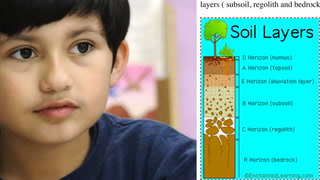
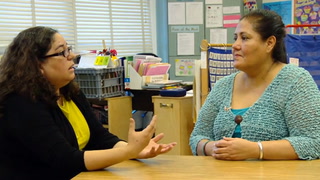

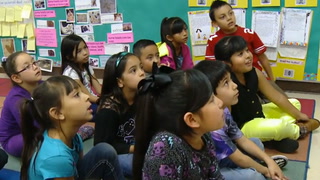
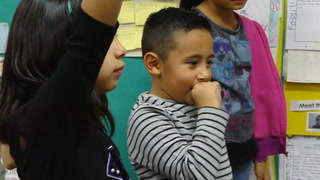
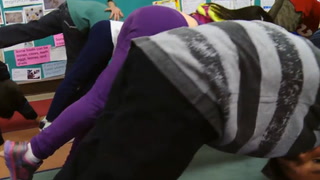








9 Comments
ligia ampie Apr 18, 2017 11:26pm
Eileen Prigal Jun 22, 2015 2:21pm
Connie Rosero Aug 30, 2014 10:22pm
Desiree Finestone Aug 5, 2014 4:57pm
angie sims Aug 1, 2014 1:55pm